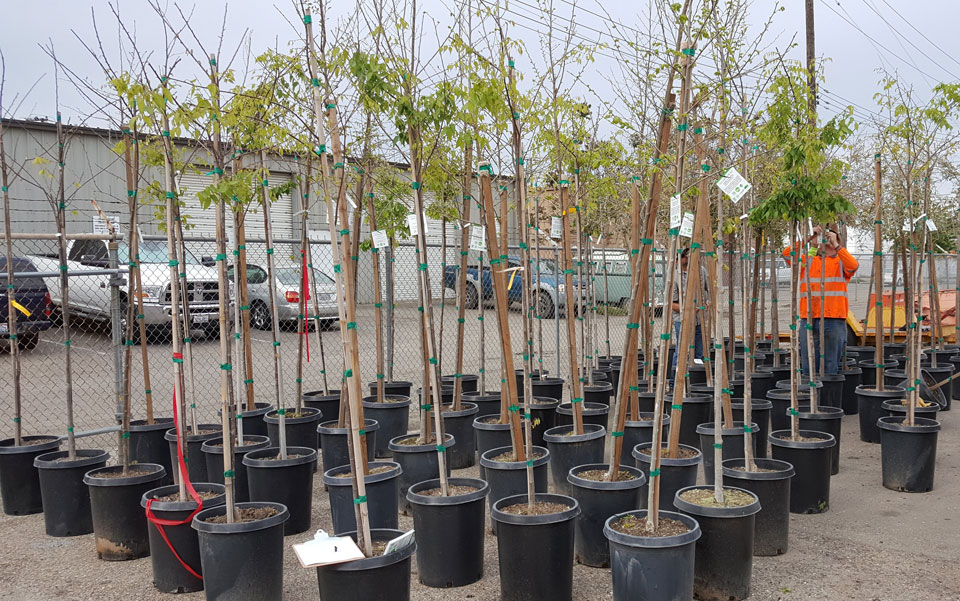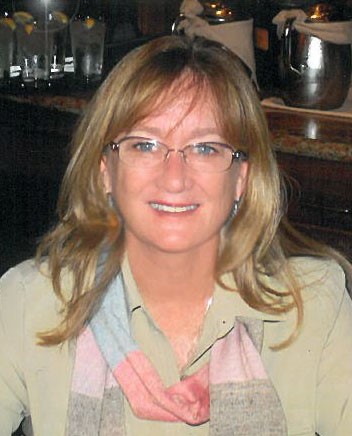
- This event has passed.
Budding out: How trees are grown in the wholesale nursery
August 16, 2018 @ 11:30 am - 1:00 pm

Budding out: How trees are grown in the wholesale nursery
Best Management Practices for Growers, Buyers and Users of Plants
Kathleen Kosta, Plant Pathologist
California Department of Food and Agriculture
What is being done to prevent the introduction and spread of new pests and diseases? Have you heard of Clean Stock Production? A Systems Approach to Production? Best Management Practices? Best Cultural Practices? Learn how these concepts are the way of the future. Cleaner, healthier, pest-free trees and shrubs for our landscape can be produced by using a clean stock production system. Landscape and tree installation and maintenance companies can employ best management and cultural practices to improve their clients landscape as well as their own businesses. International trade of plants and commodities is following and often requiring these systems to be in place.
A systems approach that utilizes best management practices (BMPs) was first employed by NASA, to produce and package food for space travel. It was essential that no “germs” were sent up into space with our astronauts, so the Hazardous Assessment of Critical Control Points (HACCP) was created to insure cleanliness from the first steps of food production to the moment it leaves our atmosphere. The concept was soon adopted by the food industry, to attempt to prevent the spread of human pathogens such as E. coli and Salmonella in our food. Critical Control Points (CCPs) are the points in an operation at which pest and disease could be introduced or spread, and are therefore the places where we also can stop them. For example, simply using new, uncontaminated potting containers, a CCP in potted plant production, is an excellent practice that could stop the spread of soil borne pathogens in nursery stock. Routine cleaning of tools can be instrumental in successful tree service and landscape maintenance.
The National Plant Board’s SANC, a Systems Approach to Nursery Certification, is a voluntary program amongst interstate shipping plant nurseries across the country, (currently in the pilot stage) that requires the implementation of best management practices (BMPs) in their plant production systems. For about 10 years, California Department of Food and Agriculture has been guiding California ornamental nurseries in similar efforts, and more recently they have been working with native plant and restoration nurseries throughout the state.
We will review the specific practices and concepts behind the BMPs, how to identify CCPs in a nursery or in any operation that handles trees or plants, development of a BMP Manual for your business and the value of documenting the good practices in your operation.

Speaker: Kathleen L. Kosta
Sr. Environmental Scientist, Plant Pathologist
California Department of Food and Agriculture
A graduate of Cal Poly, San Luis Obispo, Kathy has been working as a Plant Pathologist for 35 years. After 3 years as a structural pest control inspector in SLO, she began her career in plant disease diagnosis in the California Department of Food and Agriculture (CDFA) Plant Disease Lab in 1981 as a technician. Her job included diagnosing not only agricultural and horticultural plant problems, but also she worked closely with the CA Dept. of Forestry pathologist on forest and wildland diseases. In 1989, Kathy accepted the position of State Plant Pathologist for the Nevada Department of Agriculture, where she worked on anything from alfalfa with the farmers to zoysia grass with turfgrass specialists and ornamentals with the casinos. After returning to CDFA in 1996, she oversaw the nursery certification program for a year, and then for 9 years served as a field detection pathologist serving 27 counties in Northern California and east of the Sierras. She became the Primary State Plant Pathologist for CDFA in 2006, advising the department on policies and issues related to plant diseases. In 2012, Kathy returned to the nursery program and began to work largely on issues surrounding the pathogen, Phytophthora ramorum, the cause of Sudden Oak Death and Ramorum blight of ornamental plants. Instrumental in the development of the National Ornamental Research Site at Dominican University of California (NORS-DUC) and serving as the liaison to CDFA and USDA, she is involved in research and operational activities. Additionally, she operates the statewide Best Management Practice Program for Ornamental and Native Plant Nurseries in collaboration with the NORS-DUC Program Manager. Most recently her focus has been on the introduction and spread of the newly found pathogen, Phytophthora tentaculata and other Phytophthora species in nurseries and restoration sites.
